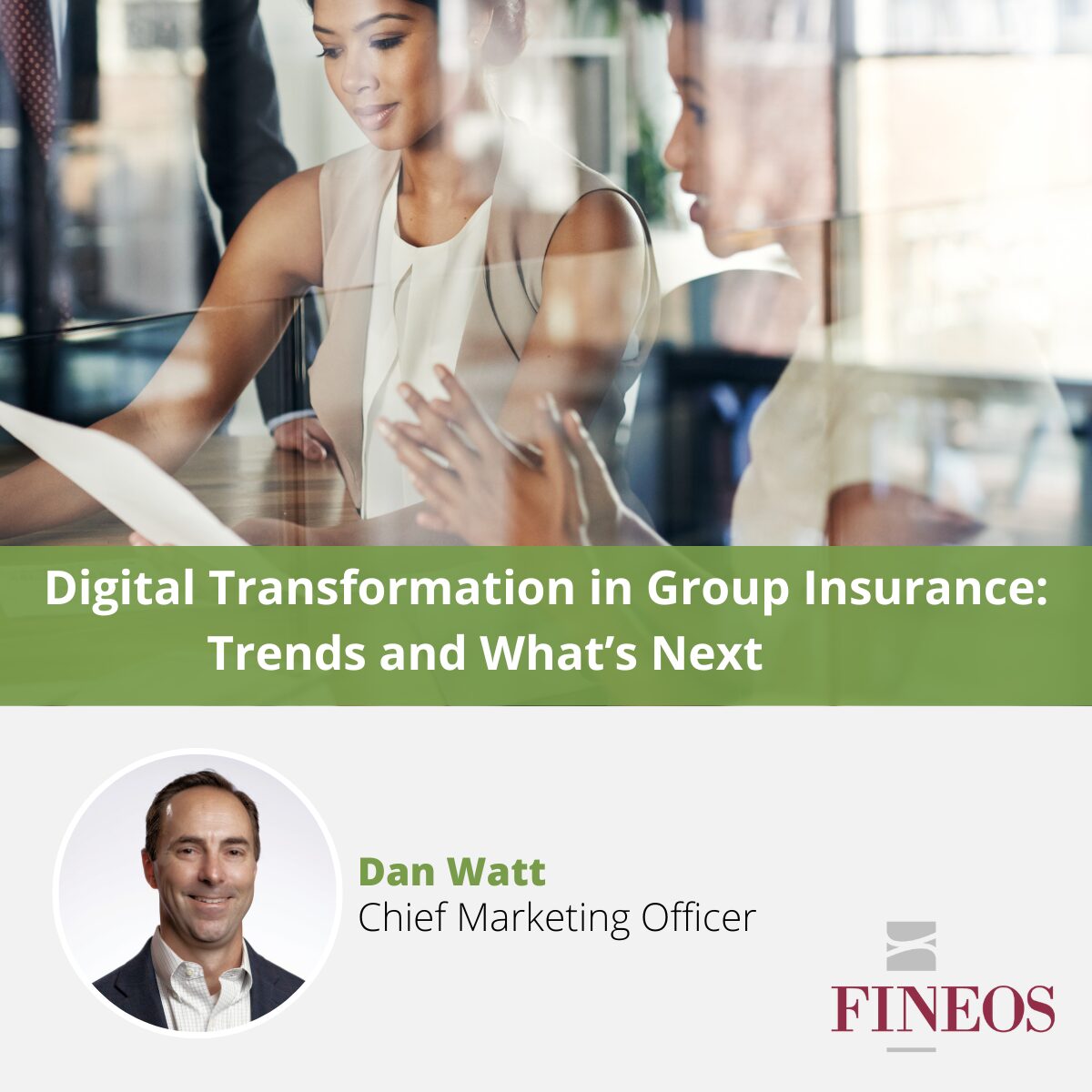I attended GroupTech Connect and InsureTech Connect in Las Vegas last month for the first time. I would have never imagined an event like this specifically for insurance when I first started my career in the disability industry more than 20 years ago. While I learned a lot there, one session that stuck out to me was the GTC keynote session, “The Transformation that Matters” by Jaimy Szymanski.
Virtually every carrier in the insurance world is at some stage of digital transformation. There are myriad experts who will say that identifying the right vendor and platform are the most critical decisions. However, Jaimy’s key message was that embarking on a dedicated change management journey with your organization is equally – if not more – essential, and it needs to start even before the vendor-selection process ramps up.
Buy-in matters
A digital transformation project involves more than the IT business unit and ripples will be felt throughout an organization. The universe of stakeholders is not limited to that siloed group. Everyone from call center agents to case managers, to account management will likely have a workflow altered or a timeline adjusted because of the upgrade. For the project to be successful, everyone in the organization must buy in to its benefits. That takes clear communication of your plans, goals, and their implications throughout the organization. Without this, the resulting resistance and slow-walking will make it difficult to call your transformation a success.
The “force” is not with you
Significant change is hard in any aspect of life. The specter of change in a workplace dominated by rules and workflows causes fear. Jaimy emphasized that questions among employees will arise and without clearly conveyed information, they will make up their own answers. Quite often, decisions about digital transformation are made in silos and “forced” on the rest of the organization, leaving employees to relate the change to its potential personal effects. The spiral quickly leads to thinking, “A new platform means I’m likely to lose my job because they won’t need me anymore.” This can tank a project and lead to an organization paying for a platform that is never fully or properly implemented due to internal opposition.
In contrast, a clearly explained plan introduced throughout all levels of the organization can stave off confusion and preclude unnecessary discomfort.
Converting opponents into allies
The insurance industry has a historically stable workforce, and many roles are governed by institutionalized processes. Simply put, a lot of people have been doing the same thing for years and don’t want to learn a new way of doing it. Left outside of the key stakeholder group, they will put up barriers and devote their energy to providing reasons why the solution will not or cannot work. These rising opponents find ways to prove that a process is too complicated for the new solution to be successful.
If they are brought along the journey instead, through a change management campaign that conveys the vision and how they fit into the long-term vision, these potential opponents will be more willing to be a part of the solution and make sure the implementation is a success. Inclusion gives them time to process the change and get comfortable with what they feel they may be “losing” while they prepare for the new processes that may be faster, easier, or free them to do new things. The same would-be opponents can become your allies at all levels of the organization.
Rowing together
The beauty of change management is the ability to effect positive outcomes from transformation. No one likes to feel left out. Having input into the implementation or the new way of working has the power to energize and empower people. That empowerment only comes from providing details about what is an exciting opportunity for your organization. When everyone knows what direction you’re heading, you can all row together and move the boat faster toward your digital transformation.
Read about a successful digital transformation now powering one of the largest group benefits insurers in the US.


